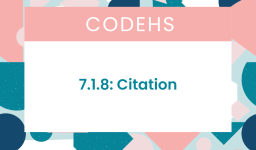Which of the following is true of portable electronic devices (PEDs) in a Sensitive Compartmented Information Facility (SCIF)?
This question is a part of the Cyber Awareness Challenge 2023 answers.
Answer
Only connect government-owned PEDs to the same level classification information system when authorized.
The protocols concerning Portable Electronic Devices (PEDs) within a Sensitive Compartmented Information Facility (SCIF) are quite stringent to ensure the security and integrity of classified information. Here’s a detailed explanation based on various guidelines and sources:
- Registration and Approval:
- All PEDs must be registered and approved by the facility’s security officer before they are allowed in a SCIF. This includes both personal and government-owned PEDs.
- Encryption and Regular Inspection:
- PEDs must be equipped with encryption capabilities and must be regularly inspected and tested for vulnerabilities. This ensures that the information contained or accessed by these devices remains secure.
- Restricted Features:
- Generally, PEDs with Wi-Fi, Bluetooth, cellular, image capturing, video recording, or audio recording capabilities or wearable devices are not permitted within the SCIF to prevent unauthorized transmission or leakage of sensitive information.
- Authorization for Government-owned PEDs:
- Government-owned PEDs are allowed in SCIFs only when expressly authorized by the respective agency. Furthermore, these PEDs should only be connected to information systems of the same level of classification and only when authorized. It’s crucial to ensure that the devices are of equal or greater classification than the information being accessed or transmitted.
- Compliance with Guidelines:
- Any PED connected to secure networks within a SCIF must be compliant with established guidelines, such as the NSA guidelines for Classified Portable Electronic Devices (PEDs) connected to the SIPRNet as mentioned in one source.
- Limited Connectivity:
- The connection of PEDs to certain networks or systems within a SCIF is limited and controlled to prevent any security breaches. This includes ensuring that PEDs are only connected to systems with the same level of classification when authorized, as stated in the provided answer.
In summary, the protocols around PED usage in SCIFs are tightly controlled to ensure the confidentiality, integrity, and availability of sensitive compartmented information. Your answer concerning connecting government-owned PEDs to the same level classification information system only when authorized aligns with the guidelines and policies outlined by various sources.



